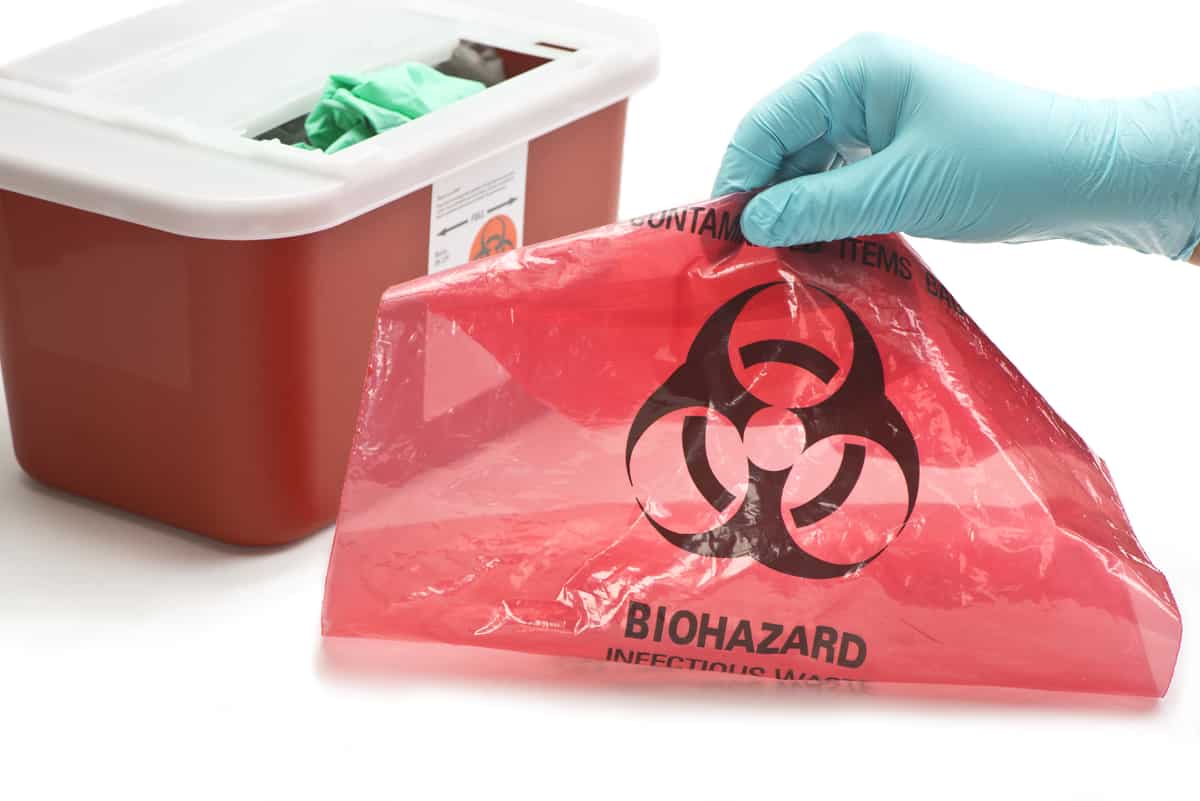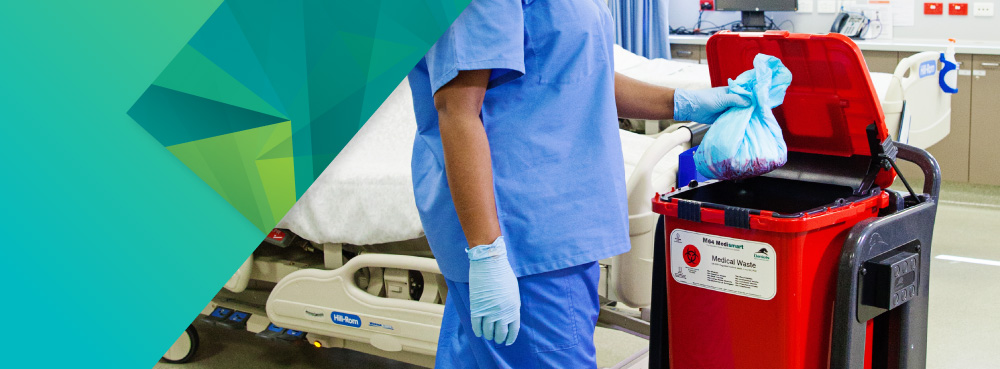Keep Ahead of Laws: Specialist Recommendations on Medical Waste Disposal
In a world where the healthcare sector is regularly advancing, it is imperative for medical centers to stay in advance of guidelines when it comes to the correct disposal of clinical waste. From comprehending the various groups of medical waste to executing the best collection and partition approaches, this discussion will provide actionable tips and beneficial insights to aid facilities remain ahead of regulations in the ever-changing landscape of medical waste disposal.
Understanding Medical Waste Categories
Comprehending clinical waste classifications is important for correct disposal and monitoring in healthcare centers. Medical waste describes any kind of waste generated by health care tasks that may pose a threat to public wellness or the setting. It is essential to categorize medical waste accurately to ensure its risk-free handling, transport, treatment, and disposal.
There are several groups of medical waste that health care facilities need to be accustomed to. One of the most common categories consist of transmittable waste, pathological waste, sharps waste, pharmaceutical waste, and chemical waste. Each classification has details guidelines and policies for its appropriate administration and disposal.
Contagious waste includes products contaminated with blood or various other bodily liquids, such as handwear covers, dress, and lab cultures. Pathological waste describes human tissues, organs, or body components that call for unique handling and disposal. Sharps waste includes made use of needles, syringes, and various other sharp items that can cause injury and send infections. Pharmaceutical waste makes up run out, unused, or polluted medicines that require careful handling and disposal. Chemical waste includes solvents, disinfectants, and various other chemical materials utilized in health care facilities.
Remaining Up-To-Date With Regulatory Changes
Staying present with governing adjustments is important for medical care centers to make sure conformity and proper administration of clinical garbage disposal. medical waste removal near me. With laws continuously advancing, it is essential for health care centers to stay updated to prevent fines, fines, and prospective damage to the environment and public health and wellness
To stay ahead of regulative changes, medical care facilities should establish a system for monitoring and monitoring updates. This can be done by subscribing to regulative newsletters, going to workshops and meetings, and proactively taking part in industry organizations. Additionally, facilities ought to designate a team member or team in charge of staying informed and distributing details to pertinent stakeholders.
Normal communication with regulative companies is additionally important. Medical care facilities ought to develop relationships with neighborhood, state, and government firms to ensure they understand any kind of adjustments in policies that might impact their waste administration practices. This can be done via regular meetings, participation in public remark durations, and aggressive engagement with governing firms.
Moreover, healthcare facilities must think about partnering with waste administration business that focus on clinical garbage disposal (medical waste disposal services with WasteX). These firms are usually skilled in the most up to date regulations and can provide support and assistance to make sure compliance
Implementing Correct Collection and Partition Approaches
To successfully handle medical garbage disposal, health care facilities must establish appropriate collection and segregation methods based on regulatory guidelines. Executing these techniques ensures the safe handling and disposal of possibly hazardous materials, secures the atmosphere, and decreases the risk of injuries and infections to health care workers and the public.
Appropriate collection and partition approaches involve using assigned containers and labeling systems. Medical care facilities must supply clearly labeled containers for various kinds of medical waste, such as sharps, transmittable waste, pharmaceutical waste, and non-hazardous waste. These containers must be color-coded and plainly marked to avoid complication and promote simple recognition.
Furthermore, health care centers should train their personnel on the proper treatments for accumulating and setting apart clinical waste. This includes educating them on the various types of waste, the suitable containers to utilize, and the value of complying with standards and regulations. Normal training sessions and refresher programs need to be performed to guarantee that team member remain current on best practices.
Additionally, healthcare centers must develop a system for normal collection and disposal of clinical waste. This might include partnering with certified waste monitoring firms that focus on clinical waste disposal. These firms will ensure that Click This Link the collected waste is moved and dealt with in conformity with governing requirements.
Selecting the Right Disposal Approaches

Incineration is among the most effective and typical methods for taking care of particular kinds of medical waste, such as pathological waste and sharps. It entails the controlled burning of waste at high temperature levels, lowering it to ash. Nonetheless, incineration can release unsafe toxins right into the air and add to air pollution.

Chemical treatment involves the usage of chemicals to disinfect and reduce the effects of the waste. Microwave treatment uses microwave power to heat and disinfect the waste.
Making Certain Conformity Via Documentation and Training
After very carefully taking into consideration the ideal disposal methods for medical waste, health care facilities should ensure compliance with policies and reduce environmental influence by implementing effective paperwork and training procedures. This step is vital in preserving a secure and sustainable setting for both medical care workers and the public.

Training is equally important in making sure conformity with policies. Medical care workers who take care of clinical waste needs to get suitable training on waste segregation, handling, and disposal procedures. This training should cover subjects such as the proper use of individual protective equipment, identification of various kinds of waste, and the correct disposal techniques for each waste category. By supplying detailed training, medical care centers can encourage their personnel to make enlightened choices and reduce the risk of inappropriate garbage disposal.
Final Thought
Finally, staying in advance of policies in clinical garbage disposal is crucial for medical care facilities. medical waste removal near me. Understanding the various groups of medical waste, remaining upgraded with governing adjustments, executing proper collection and partition techniques, choosing the proper disposal approaches, and making certain compliance through documentation and training are all vital steps. By adhering to these standards, healthcare organizations can properly get rid of and handle of clinical waste in a risk-free and accountable manner
From comprehending the various groups of clinical waste to implementing the right collection and partition methods, this discussion will offer useful insights and actionable ideas to aid centers remain in advance of policies in the ever-changing landscape of clinical waste disposal. - medical waste disposal services with WasteX
The most common groups include transmittable waste, pathological waste, sharps waste, pharmaceutical waste, and chemical waste. Healthcare centers need to offer plainly identified containers for different kinds of medical waste, such as sharps, transmittable waste, pharmaceutical waste, and non-hazardous waste. Healthcare centers need to establish a comprehensive system to videotape and track all facets of clinical waste disposal, including types of waste created, quantities, and disposal approaches used. Healthcare workers who handle medical waste needs to receive suitable training on waste partition, dealing with, and disposal procedures.